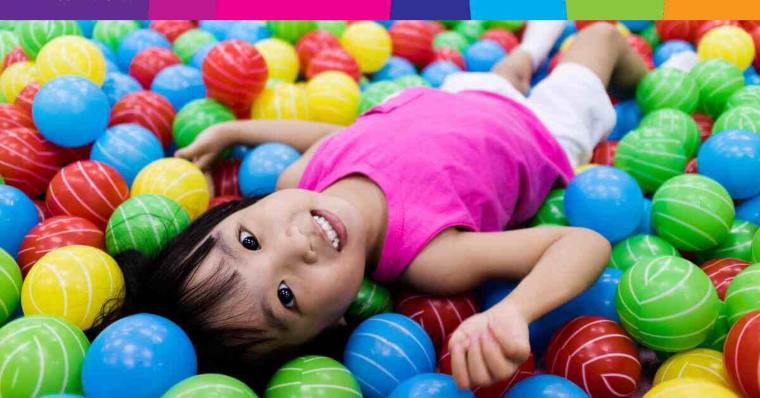Practice Based Feature: Anna Willis
By Anna Willis, 15 March 2022

Anna Willis is an independent Occupational Therapist, graduating in 2008. She has worked across NHS and education settings, and set up her business Active Play Therapies in 2014. She started her career working with adults with learning disabilities and has now worked as a children’s OT for over 10 years, specialising in working with neurodiverse individuals. Anna has completed post graduate sensory integration (SI) training and is an Advanced SI Practitioner. She checks back in with us to share how her practice has continued to change and adapt to the current climate as we move towards a different stage in the pandemic.

Anna Willis
Over the past two years, our working practice has altered radically. No one’s work life as an allied health professional, at least in the UK, has been unchanged. The COVID-19 pandemic brought with it a sudden move from freedom to restrictions, which evolved into constantly changing levels of restrictions in response to levels of community infection. It was a challenge for UK AHPs to match the new laws and regulations, constantly tweaking our schedule and working practices.
Unexpected Bonus of the Pandemic
I’ve written about one of the unexpected bonuses that the pandemic delivered for me - families videoing their children. The ability to get a quick snapshot of normal family life was invaluable. Additionally, the lack of travel time needed and being able to open up to a wider geographical area was helpful. I didn’t truly appreciate the amount of extra time freed up by not having to travel until now when I’ve returned to commuting to visits.
Trying to Offer ASI Remotely
However, there were significant drawbacks with solely working remotely. I couldn’t offer Ayres Sensory Integration intervention: I tried exploratory sensory sessions online but, personally, I found it an ineffective and clunky way of working. Where I’d typically shift activities subtly, changing the level of challenge, adding in new items all wordlessly, I then had to rely on giving these instructions verbally. This shifted the dynamic and frequently affected the unspoken therapeutic alliance that the child and I would be developing between us when working face-to-face in a sensory gym.
What Worked
Instead, what I found worked for me was offering assessments, consultation and emotional regulation work online. For sessions on emotional regulation, I typically used the Zones of Regulation programme alongside interoceptive work. Together, we were able to ‘screen share’ to build posters of the child’s zones, personalised with characters they related to each emotion zone, and developed a toolkit together of strategies that helped them get back to the green (happy/ OK) zone. This worked well for children who were able to engage at this cognitive level and work collaboratively. For children and young people who struggled with this, I used parent consultation. Spending more time speaking to parents was valuable, not just at the start to assess and set goals, but regularly throughout therapy. I built up a much clearer picture of how a child was functioning at home. It’s very different to achieve this in the 5 or 10-minute chat I would have had in a face-to-face therapy session.
In terms of my assessments online, I have started using Sensory Processing Measure second edition(SPM™-2), that I can email out and families can complete online. I combine this with information from a form I send out beforehand and video call discussion (without the child in the room for younger children to avoid discussion in front of them about their areas of difficulty). I have also started to use the Structured Observations of Sensory Integration-Motor (SOSI-M) to gather standardised data (where I previously used clinical observations). I am also enjoying scoring the SOSI-M online as this is less time consuming than scoring it on paper.
Advert
Returning to Face-to-Face Work
Now restrictions have lifted in the UK, I am back in the sensory gym doing face-to-face sessions - hoorah! It’s great to be back working directly, although the level of cleaning required is time consuming. It affects the equipment I can use in sessions, as everything needs to be easily cleanable, and that in turn influences what activities I’m willing to get out that day, as I’m weighing up how much time I have to clean at the end.
Generally, other than the restricted equipment and cleaning time (and wearing PPE), things are feeling a lot more normal. Being able to directly work with children and young people again is so refreshing. It has made me realise just how important all the nonverbal work is that we automatically use in sessions. I can’t set up inviting play spaces and environments over a video call but I can have reflective conversations with parents.
What I'm Grateful For
Moving forwards, there’s so much we’ve all learnt that we can cherry-pick from to embed into our practice. For me, it will be using video calls for consultations and some assessment work, using the SPM-2 and asking parents and caregivers to provide video clips to go alongside assessment data. But as well as the new ways of working, I have a renewed sense of gratitude for having such a fun, rewarding job where I can work, nearly wordlessly at times, with others to build playful opportunities. My hope is that I can hold onto this new perspective and this feeling of joy and gratitude - particularly whilst I’m busy at the end of sessions wiping down every possible surface!


